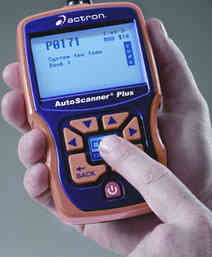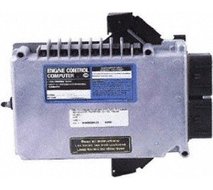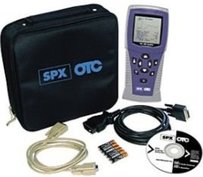Using Snapshot Mode on Automotive Scanners

I get a few questions about using snapshot mode on automotive scanners. It is one of the features I use often when the diagnosis is getting complicated. It’s one of my favorite features of the tool because it can also be useful in pinpointing intermittent car problems that can be difficult to find using other reliable methods.
Let’s say you have an intermittent problem that is caused by a loose or corroded electrical connection to an automotive sensor. The problem turns on the check engine light or causes an issue when the vehicle hits a bump or slams a pothole in the road. The automotive scanner with a snapshot mode can provide data for diagnosis.
Information from the data stream can be reviewed right before and after the vehicle hits the bump or pothole. I have written some reviews of automotive scanners in several price ranges and a few of them are capable of taking these diagnostic snapshots of the data stream. When it comes to Diy auto mechanics it seems that this feature is underutilized.
The Automotive Computer is Your Friend

When you get right down to it the primary purpose of OBD II is to make the diagnosis of many automotive problems less complicated. Note that OBD II was deployed on vehicles beginning with the model year 1996 and is still used on present day automobiles. This latest generation of on-board computers also brings a uniform diagnostic platform across all vehicles whether they are foreign or domestic.
One of the things that’s included in this standardized diagnostic protocol is the snapshot feature. Some mechanics call this feature freeze frame mode instead of snapshot but it is basically the same thing. My definition of it is the computer’s ability to record data from all of the sensors and actuators at a time when the system turns on the check engine light or sets a pending fault.
General Motors has taken this one step further and expanded the capability to include failure reports which does the same thing as the snapshot or freeze-frame but also includes any faults stored in the memory. Not just those related to the emission control system. This is helpful because a failure report can include information from the transmission control module responsible for transmission shifting and operation as well as the body computer that is responsible for ABS braking systems, traction control and airbag information on many vehicles.
The basic advantage of using snapshot mode on automotive scanners is the ability to look at the existing conditions when the code was set. This is especially valuable for diagnosing intermittent problems as I mentioned above. Whenever codes are set a record of all related activities is stored in the main computer’s memory. This record allows the mechanic to look at the action of the sensors and the actuators at the time the code was triggered. This can often help identify or pinpoint the cars problem.
Automotive Scanners Are Not Hard to Use

When I started this article about using snapshot mode on automotive scanners I realized that it sounds more complicated than it actually is. The automobile scanners that are available today provide excellent documentation usually in the form of a CD that ships with the tool. It does a good job of walking you through the different features that the tool is capable of including the freeze-frame or snapshot mode.
A wide variety of car Scan tools are available today. The strength of the included documentation will vary depending on the make and model. I have seen people complain about the directions included with some off brands. When you boil it down the scan tool is a microprocessor designed to communicate with the vehicle’s computer. It is connected to the OBD II diagnostic connector that is usually located just left of the steering column.
The scan tool can access trouble codes, run tests and if it is capable of reading the data stream it can show you the activity of the different sensors in the system. Most people buy these scan tools and just use them for pulling trouble codes and maybe resetting the check engine light. If you spend the money on one these scan tools why not take the time and learn how to get the most out of it! For more recent articles this next link will take you back to the auto repair information blog homepage.

